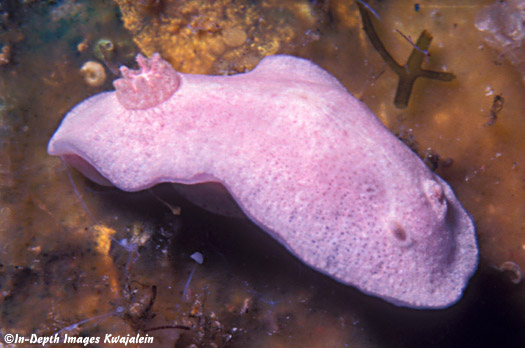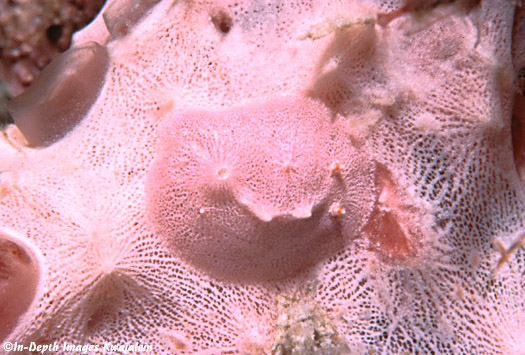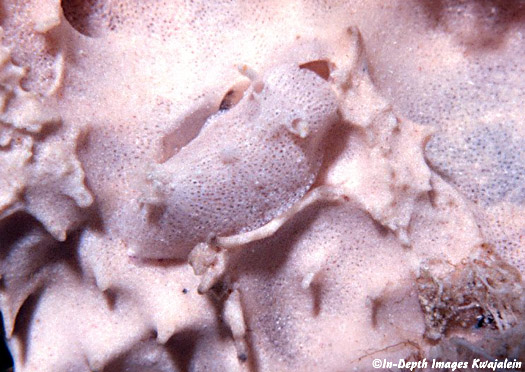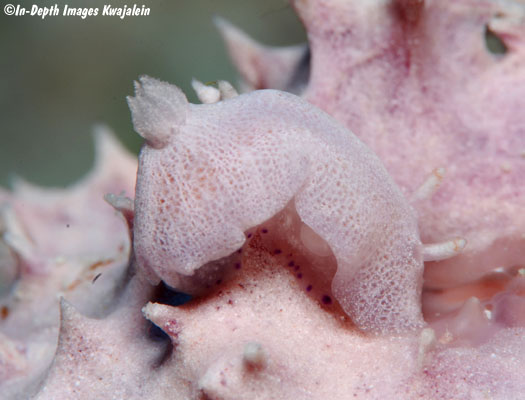
Although this nudibranch doesn't bear much resemblance to a typical chromodorid, its internal anatomy, particularly the reproductive system and radula, is very chromodorid-like. The radula resembles that of a species in the genus Mexichromis. While I have reservations about placing it in Goniobranchus, Gosliner et al (2018) figure it as Goniobranchus sp. 47, and we are following that here. However, the external features of the body and the prey sponge make it look somewhat similar to Verconia verconis, a species currently known only from temperate Australian waters. This nudibranch was first found when we were collecting some lagoon bottom sponges at the Mid-Pacific Research Lab on Enewetak for biochemical analysis. While holding the sponge in a sea table, one of these nudibranchs crawled off. They so closely resemble their prey sponge they are probably usually overlooked. In fact, they are not at all rare--they just spend all their time on the sponge and they blend in so well they are extremely hard to see. The sponge is very common, especially in sandy lagoon bottom habitats. At Kwajalein, we have also found them on sponge colonies growing on lagoon-bottom shipwrecks. Twelve specimens we've measured ranged from 7 to 15mm in length. Specimens have been observed at depths ranging from about 8 to 40 meters.



The photo directly below shows a series of purple spots along the edge of the foot, in the shadow of the mantle margin around the middle of the body.

Created 3 January 2006
Updated 3 December 2018